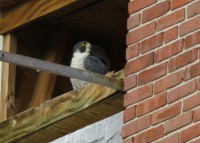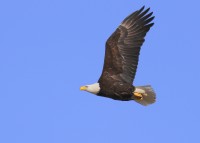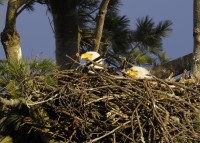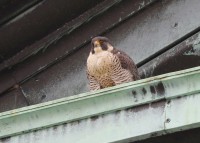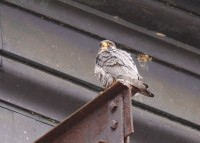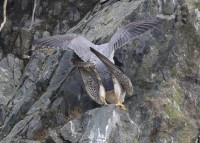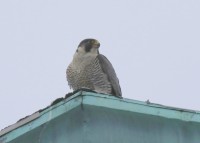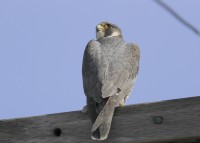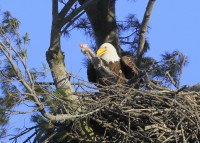Peregrine Falcons: Taunton Green
March 31, 2017 in Peregrine Falcons Massachusetts
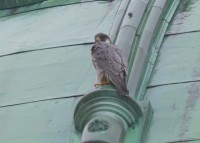 Under heavy overcast skies, snow, sleet, fog, light winds from the East and temps in mid-thirties, had a nice opportunity to observe a pair of peregrine falcons in a known nesting location near Taunton Green in downtown Taunton, MA. The female was seen perched and in flight prior to returning to the nest box. The male was seen in a number of aerial loops prior to settling in on the ledge of a copper roof! A left leg band was seen but not close enough to make a positive ID….stay tuned!
Under heavy overcast skies, snow, sleet, fog, light winds from the East and temps in mid-thirties, had a nice opportunity to observe a pair of peregrine falcons in a known nesting location near Taunton Green in downtown Taunton, MA. The female was seen perched and in flight prior to returning to the nest box. The male was seen in a number of aerial loops prior to settling in on the ledge of a copper roof! A left leg band was seen but not close enough to make a positive ID….stay tuned!
